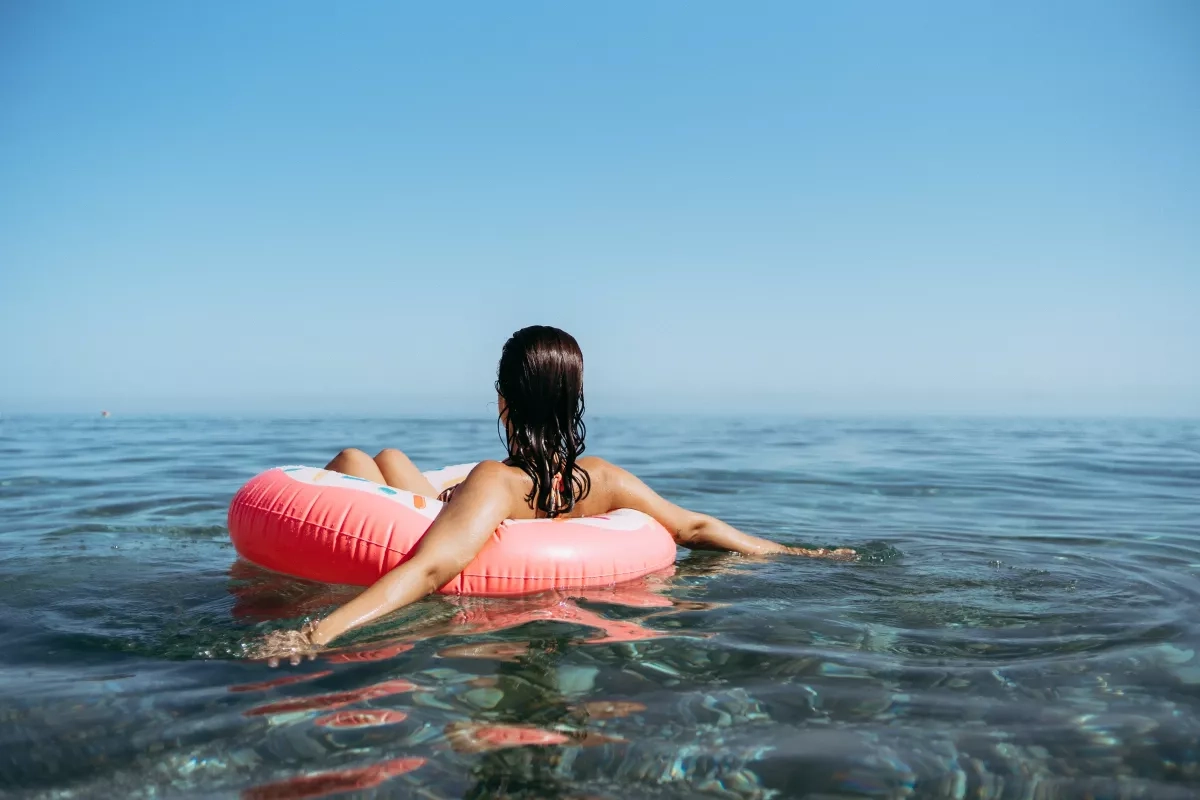Safe Summer Swimming: What You Need to Know

Photo source: Getty Images
We will learn the experts' recommendations on how to behave in fast currents, dry drowning and jumping in unknown places.
Pool parties, trips to the beach, lakeside vacations, river rafting, water parks — summer is filled with water adventures. But with this comes the awareness of the risks that water poses. As of early July, according to the head of the Ministry of Emergency Situations Alexander Kurenkov, more than 1,600 people have already died in water bodies in Russia in 2024, including over 200 children. The main cause is drowning. So how can we avoid fatalities? What does everyone need to know when it comes to safe bathing and swimming? In this review, experts' opinions.
Drowning does not look like drowning
Photo source: 123rf.com
Many people believe that when a person is drowning, they immediately get the attention of others by splashing water and calling out, “Help!” According to Adam Kaczmarci, CEO of the National Drowning Prevention Alliance (NDPA), these people are professionally known as “swimmers in distress.” “They’re still able to support themselves in the water, they can’t swim anymore, but they can stay afloat and call out for help,” he says. However, a true drowning victim experiences what’s called the instinctive drowning response. “It’s a 20- to 60-second struggle to the death where you can no longer stay afloat. So the movements are usually vertical – up and down – and that’s true for both adults and children,” Adam notes. Once someone is underwater, there’s no guarantee they’ll come back up.
What to do if you get caught in a strong current
Any body of water is fraught with danger – be it the ocean or a river – they all have fast currents. According to Kaczmarci, even large lakes have them. “The one thing we want to understand is that the best swimmer in the world cannot fight a strong current,” he notes. Those who are unlucky enough to find themselves in a turbulent current should remain calm and try to swim parallel to the shore, gradually approaching it. If fatigue sets in, it is worth trying to hover to conserve energy and, again, try to drift towards the shore.
Swimming lessons as a means of preventing the threat of drowning
Photo source: 123rf.com
Experts urge everyone who is afraid of water or is not a very good swimmer, but loves to relax by the water, to take care of themselves in advance. But even if you are not a fan of water fun, it can come to you itself, for example, in the form of a flood. Therefore, sign up for swimming lessons at any time of the year - group or with an instructor. And do the same for your children. This pleasure is not very expensive, but the benefits from it are colossal. You will be able to feel comfortable in nature, without fear of sipping water or losing orientation in space while swimming.
Attention, and again attention
Let's dwell in more detail on children. According to statistics, most children drown in the presence of at least one adult. It is very easy to get distracted in the same water park or pool, and a few seconds are enough for an accident. Therefore, attention, and again attention. Moreover, inflatable equipment - armbands or inflatable rings and mattresses - are not a guarantee of safety, the expert says. "Nothing holds these products on the child's body. Often, the armbands can simply slip off when raising the arms up," he reminds. Therefore, it is better to use them only as toys during rest.
Other tips for safe swimming:
Never swim alone, even if you are well trained. Anything can happen in the water, even to experienced swimmers - cramps or heart problems. Therefore, it is better to swim in a company, and swim long distances at least in a pair.
Wear bright shorts or a swimsuit. For example, neon yellow or pink. If something happens to a person in the water, it is easier to find him by his bright clothes. And this applies not only to children, but also to adults. And it is better, in general, to avoid blue or green clothing when swimming, which, as a rule, blend in with the water.
Photo source: 123rf.com
Start teaching children to swim at one year. Although some pediatricians recommend swimming with a child almost from birth, awareness of movements comes to him at about 12 months. “At this age, children master basic water survival skills, such as the ability to swim and breathe correctly,” says Kaczmarci.